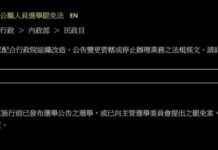The latest episode of the financial planning program “Please Support Financial Management,” created by Cathay United Bank, was simultaneously broadcast on the official YouTube and Podcast channels this week. Hosted by well-known financial anchor Ye Zhijuan, the episode invited Jackie, the deputy manager of the Cathay United Financial Management Department, and well-known artist Ji Qin to share their financial management experiences at different stages of life and the essential concept of “asset allocation” in investment planning. Whether you are aggressive or conservative in your investment approach, having a sense of investment risk is crucial!
Everyone has different investment preferences and ideas. Some prefer aggressive investments, while others lean towards conservative ones. However, regardless of the type of investor, understanding the concept of “asset allocation” is essential to stand firm in the fluctuating market and achieve more stable investment returns.
Guest Ji Qin shared her unique logic when it comes to investment and asset allocation. She emphasized the importance of investing idle money so that even if the timing of entry is not ideal, there is still room to observe the market changes. In terms of financial distribution, she mentioned that she would save half of her income and allocate the other half for various purposes. For instance, she would set aside 20% as emergency savings, allocate 30% into stocks and bonds, and use the remaining 10% to purchase insurance, following a straightforward allocation strategy.
Jackie, the financial management expert from Cathay United, also reminded investors that despite the recent strong performance of global stock markets, events like the COVID-19 outbreak four years ago and the significant interest rate hike in the US two years ago have shown the high volatility of financial markets. Therefore, having a heightened sense of risk awareness is beneficial for investors.
The concept of asset allocation is akin to not putting all your eggs in one basket. Its essence lies in reducing risk and enhancing investment stability. By balancing investments in the stock and bond markets, investors can mitigate the pressure of market fluctuations compared to a single stock market layout.
In addition to stock and bond allocations, the same principle can be applied to currency allocation. Jackie suggested that by converting some Taiwanese dollars into US dollars, investors can enjoy higher fixed deposit rates, have access to a more diverse range of investment targets, and have flexibility for future plans like traveling abroad or funding their children’s education. Therefore, investors can consider adding one or two different currencies as a form of asset allocation.
While asset allocation may seem simple by diversifying funds into various assets, it is crucial to understand that the focus is not on the number of investments but rather on the correlation between investment targets. Simply buying multiple stocks and funds does not guarantee protection against market downturns if they are all correlated.
Understanding the significance of asset allocation, many individuals may want to delve deeper into understanding the “allocation ratio.” However, the allocation method and the ratio between stocks and bonds vary depending on an individual’s investment attributes and risk tolerance. Jackie emphasized the importance of gradually reducing aggressive assets and increasing conservative assets as individuals age to navigate different stages of life prudently.
Jackie highlighted the concept of “core assets” and “satellite assets,” where core assets are the central part of asset allocation with the highest allocation weight, suggesting minimal adjustments to maintain stability. On the other hand, satellite assets are smaller portions of the investment portfolio that offer flexibility to explore higher-yielding targets with greater volatility.
Furthermore, Jackie emphasized that investment and financial planning are long-term endeavors, akin to a marathon race. By maintaining a balanced mix of core and satellite assets and adhering to the concept of “long-term investment,” investors can reduce stress when facing significant market fluctuations.
In conclusion, investment gains and losses are temporary, but smart financial planning is lifelong. Concepts discussed in this episode, such as stock and bond allocation, currency allocation, core assets, and satellite assets, aim to help individuals optimize their wealth and manage risks effectively in a way that suits their financial needs. For more detailed information, viewers are encouraged to watch the full episode on the official channels.












